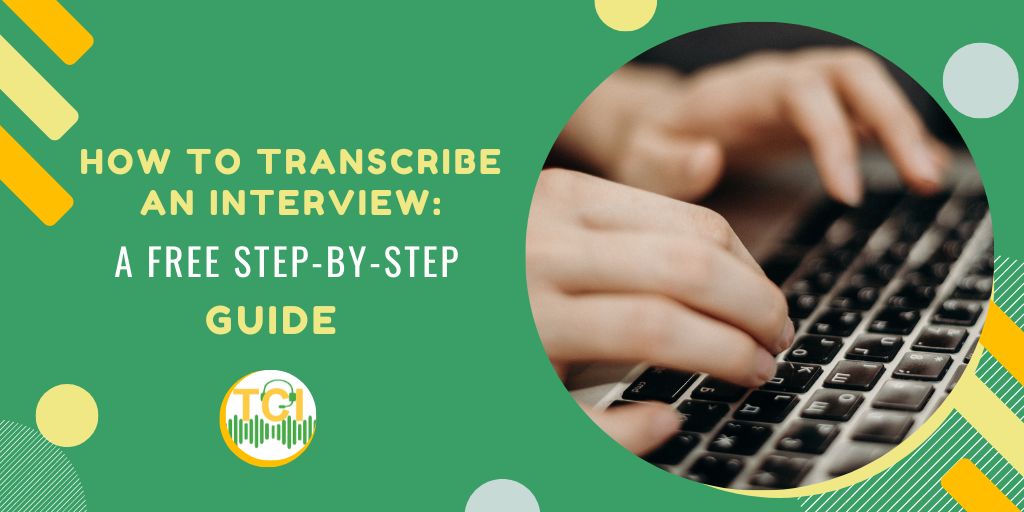
Are you an aspiring transcriptionist looking to learn how to transcribe an interview or a professional looking to just hone your interview transcription skills?
Well, transcription is a responsible job with several aspects and requires rigorous attention to each one of them. Whether it's legal, medical, or research, different types of transcription have different processes and require certain skills specific to every kind. The same holds true for interview transcription.
In order to deliver accurate interview transcripts to your client, you will need to learn about them, their format, and the process of transcribing such content.
To make it easier for you, we have discussed all of them here.
An interview transcript is a written document of oral communication between an interviewee and one or more interviewers where the documentation of the interview is done either in real-time or from an audio or video file.
Interview transcription is not limited to the transcription of job interviews and may include research interviews, telephonic interviews, radio interviews, and group discussions.
Several factors may affect the process when you transcribe an interview. They are:
The reason for getting an interview transcript plays a crucial role in the level of accuracy and detail required in the transcript. For example, a verbatim transcript is unnecessary if it is for your personal use and you intend to use it only for reference notes. However, if you must share the transcript with others for them to review, a higher level of clarity and accuracy is needed.
Before you start transcribing, you must ensure that you are well-equipped and have the latest tools, such as:
Based on the level of detail in the transcripts, they can be classified into:
Whether you need additional features such as timestamps and identification of speakers must be decided before you start transcribing. Timestamps are particularly helpful when you want to refer to a specific part of the script and can directly access it. You can name speakers as 1, 2, 3, and so on, respectively.
According to the Indeed editorial team, here’s how you should go about preparing your interview transcript:
Hearing the entire audio recording provides you with the following important information:
Start with a rough draft that has all the main details of the audio. It does not need to be entirely accurate. For instance, the usage of shortcuts like auto-correcting abbreviations, placeholder texts, and timestamps both simplifies and hastens the transcription process.
Editing the rough draft is a crucial step as it provides clarity and conciseness to the transcript. It helps you to delete grammatical and syntax mistakes and also ensures that the structure and flow of the transcribed script are similar to the interview.
Formatting your edited document is the final step of transcription, as adhering to the interview transcript format is important. It includes adjustment of the font size and addition of titles, headers, paragraphs, and page numbers.
However, this process might be exhausting for lengthy audios. As a transcriptionist, you will get paid by the hour of audio length and usually, you will know upfront how many speakers there are. So it's best to scan long interviews and divide them into sections rather than creating rough drafts and final versions. This way, you can save time.
Interviewer: Why have you selected transcription as your career choice?
Interviewee 1: Besides offering a broad scope for professional growth, the career of a transcriptionist requires certain skills that I have, such as strong listening skills, fast and accurate typing skills, sound language and proofreading skills, and attention to detail.
Interviewer: How fast can you complete transcribing an hour-long interview?
Interviewee 2: To start with, it may take 4-5 hours, but with experience and practice, I’m sure I will be able to do a faster job with higher accuracy.
What you have read here is just an overview - a drop out of the ocean. To master your interview transcription skills, you need to have an in-depth understanding of every factor and step mentioned here. You can start by browsing through various articles and free resources on our website.
However, if you are looking to learn transcription skills from scratch, then enroll in the TCI course that is 100% online and self-paced and equips you to earn your potential in just 3 weeks. Contact our team to learn more about our course and services.
Q1. How long does it take to transcribe an interview?
A1. Your typing speed determines the time it will take to transcribe an interview. An expert transcriber typically takes one hour to accurately transcribe a fifteen-minute-long piece of recorded audio.
Q2. How much does it cost to transcribe interviews?
A2. The cost of transcribing an interview depends on the length of the recording and the turnaround time. The general industry rate for interview transcripts varies from $1.30 per minute to $3.50 per minute depending upon the turnaround time requested.
Q3. How to transcribe interviews for research?
A3. You must focus on the accuracy of facts while transcribing interviews for research.
Your TRANSCRIPTION CAREER CAPSULE to Help You BOOST Your Potential
Latest Industry News, Jobs, Tips and More..

Comments are closed